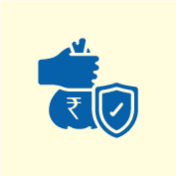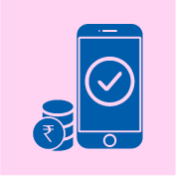1 Pavan Gold Rate
What is 1 pavan gold rate
If you have ever bought gold in South India, you have probably heard the word “pavan.” It is a traditional way of measuring gold, especially popular in states like Kerala and Tamil Nadu. One pavan equals 8 grams of gold, and for many families, it is the go-to unit when buying jewellery for weddings or festivals. But it is not just about culture—knowing the price of 1 pavan of gold today matters if you are planning to buy, sell, or even invest. Gold prices shift every day based on global market trends, the strength of the rupee, and how much demand there is locally. Whether you are a casual buyer or someone tracking the market closely, staying informed about the current pavan rate helps you make smarter choices. Keeping an eye on the gold rate means you know when to buy, when to wait, and how to get the best value.
Understanding the value of 1 Pavan gold
Understanding the significance of gold measurement is crucial in the financial landscape, and one such measure is the "1 pavan gold rate." In regions like South India, particularly Kerala and Tamil Nadu, a "pavan" serves as a traditional unit of gold measurement, approximately equivalent to 8 grams. Monitoring the 1 pavan gold rate is pivotal for investors and traders to assess market trends and make informed decisions. Influenced by various factors such as global market trends, local demand, economic conditions, and currency fluctuations, this rate provides valuable insights into the value of gold. Therefore, staying updated on the 1 pavan gold rate aids individuals in navigating their gold-related transactions effectively.
Factors influencing 1 pavan gold rate fluctuations
Several factors contribute to the fluctuations in the 1 pavan gold rate, impacting investors and traders alike:
- Global market trends: Changes in international gold prices have a significant influence on local rates.
- Local demand and supply: The demand for gold jewellery, coins, and other ornaments in the local market affects prices.
- Economic conditions: Economic stability or volatility, inflation rates, and currency strength or weakness play a crucial role.
- Government policies: Any changes in government regulations, taxes, or import duties on gold can affect its price.
- Market sentiment: Investor sentiment, geopolitical tensions, and macroeconomic factors also contribute to price fluctuations.
Understanding these factors is essential for investors and traders to anticipate market movements accurately and make informed decisions regarding buying, selling, or holding gold. By monitoring these influences, individuals can adapt their strategies to navigate the dynamic gold market effectively.
Curious about your loan eligibility? Enter your mobile number to see how much you can get for your gold.
Global market trends impacting 1 pavan gold rate
Global market trends play a significant role in determining the rate of 1 pavan gold, influencing its value on a daily basis. Understanding these trends is crucial for investors and traders looking to make informed decisions in the gold market. Here's how global market trends impact the rate of 1 pavan gold:
- Supply and demand dynamics: Fluctuations in global supply and demand for gold directly affect its price.
- Currency fluctuations: Changes in currency values relative to major global currencies can impact the price of gold.
- Geopolitical events: Political instability or tensions in key gold-producing regions can lead to fluctuations in gold prices..
- Interest rates: Gold prices often move inversely to interest rates, with lower rates typically driving up the price of gold.
By keeping an eye on these global market trends, investors can better anticipate price movements and make strategic decisions regarding their 1 pavan gold holdings.
Make informed financial decisions. Check your gold loan eligibility and leverage the value of your gold based on today’s rates.
How to calculate the value of 1 pavan gold
To calculate the value of 1 pavan gold, you need to understand the basic unit of weight used for gold in India. One pavan is equivalent to approximately 8 grams. Gold prices are generally quoted per gram, so to calculate the value of 1 pavan of gold, you need to multiply the price per gram by 8.
For example, if the 1 pavan gold rate today is ₹5,000 per gram, then the value of 1 pavan of gold would be ₹40,000 (₹5,000 x 8). If you are purchasing jewellery, you should also factor in making charges and the purity of the gold, as these can impact the final price. Gold purity is typically measured in karats, with 24K representing pure gold and lower karats having a percentage of other metals mixed in.
This simple calculation allows you to determine the price of 1 pavan of gold at any given time and plan your gold purchases accordingly.
1 pavan gold price trends over the past year
Tracking the 1 pavan gold rate today and its trends over the past year can give you a clearer understanding of the gold market. Gold prices are subject to fluctuation due to various factors, such as changes in global economic conditions, inflation, and fluctuations in the value of the Indian Rupee. Over the past year, the gold rate in India has seen periods of significant change, reflecting these global and local influences.
For instance, during times of high inflation or economic instability, gold often sees an increase in price as investors look to secure their wealth in a stable asset. Similarly, gold prices may dip during periods of market recovery when other investment options become more attractive. The 1 pavan gold rate today is reflective of these ongoing trends, with short-term spikes or dips in prices depending on global market events.
Being aware of these trends helps you make informed decisions about when to buy or sell gold, ensuring that you get the best value for your investment.
Manage planned to urgent expenses with ease. Check your gold loan eligibility now and make your gold work for your needs.
How global gold prices affect 1 pavan gold rate
The 1 pavan gold rate today is deeply influenced by global gold prices. As gold is a globally traded commodity, its price is determined by international markets, primarily in New York and London. When there’s a rise in global gold prices, the 1 pavan gold rate today in India tends to mirror these changes due to the interconnectedness of the markets.
One of the key global factors influencing gold prices is the US dollar. Gold is priced in dollars, so when the value of the dollar strengthens, the cost of gold tends to decrease, and vice versa. Additionally, global demand, driven by factors like economic uncertainty, inflation concerns, and geopolitical instability, can cause gold prices to rise. For example, during times of economic crises, such as the 2008 financial meltdown or the COVID-19 pandemic, global gold prices surged as investors sought a safe haven.
Therefore, understanding global trends is crucial for determining the 1 pavan gold rate today in India and can help buyers predict price movements in the domestic market.
Check your gold loan eligibility in seconds to know how much you can borrow—easy, accurate, and hassle-free.
How to verify the purity of 1 pavan gold before buying
Verifying the purity of 1 pavan gold before purchasing is essential to ensure that you're getting the value for your money. Gold purity is typically measured in karats (K), with 24K representing pure gold, while lower karats indicate that the gold has been mixed with other metals, such as copper or silver. To confirm the purity, you can request a hallmark certification from the seller.
In India, the Bureau of Indian Standards (BIS) is responsible for certifying gold purity. The hallmark is a sign of authenticity and ensures that the gold you're buying meets the standard of purity stated by the seller. You can also use acid testing or electronic devices that assess purity, though it’s best to rely on established jewellers who provide BIS-certified gold.
When calculating the cost of 1 pavan gold, knowing its purity is crucial, as it directly impacts the price. For example, 24K gold will be more expensive than 22K gold. Make sure to cross-check the purity to avoid overpaying for lower-quality gold.
Historical data analysis for 1 pavan gold rate
Analysing historical data for the 1 pavan gold rate provides valuable insights for investors and traders in understanding gold price trends and making informed decisions. By examining past fluctuations, one can identify patterns, assess market sentiment, and anticipate future movements. Factors such as economic indicators, geopolitical events, and supply-demand dynamics influence gold prices over time. Historical data analysis allows individuals to evaluate the performance of gold as an investment asset and adjust their strategies accordingly. Utilizing tools like charts, graphs, and statistical models, investors can conduct thorough analyses to forecast potential price movements and mitigate risks. Access to reliable historical data enables stakeholders to develop robust trading strategies and optimise their returns in the dynamic gold market environment.
Impact of 1 pavan gold rates on gold loans
The rate of 1 Pavan of gold plays a key role in determining the gold loan amount a borrower can access. Since gold loans are secured against gold jewellery, any rise in the 1 Pavan gold rate directly increases the value of the pledged collateral. As a result, lenders are likely to offer a higher loan amount, improving the loan-to-value (LTV) ratio for the borrower. On the other hand, if the 1 Pavan gold rate drops, the eligible loan amount may reduce, impacting the overall borrowing potential. Thus, monitoring the daily rate of 1 Pavan gold is essential for those planning to apply for a gold loan, as it helps in making informed financial decisions and maximising loan benefits.
In such scenarios, borrowers may seek to leverage their gold holdings more extensively to obtain the necessary funds for various financial needs, such as business investments, debt consolidation, or personal expenses. However, accurately assessing the current value of their gold assets becomes paramount in determining the optimal loan amount. Utilising tools like a gold rate calculator enables borrowers to precisely evaluate their gold's current market value, ensuring they borrow responsibly and within their means.
Furthermore, the surge in gold prices often attracts a higher influx of borrowers seeking financial assistance by leveraging their gold jewellery. This heightened demand can lead to increased competition among lenders, prompting them to offer more competitive loan terms to attract borrowers. As a result, borrowers may benefit from low gold loan interest rates, flexible repayment options, or other incentives, making gold loans an attractive borrowing option in the market.
Overall, instant gold loans provide individuals with a flexible and accessible means of accessing funds, particularly during periods of rising gold prices. By leveraging their gold assets, borrowers can navigate financial challenges with confidence and seize opportunities to achieve their goals, all while benefiting from the security and stability that gold-backed loans offer in the ever-changing financial landscape.
It takes just 2 steps to check your eligibility for a Bajaj Finserv Gold Loan. Enter your mobile number now.
How to avail a gold loan using 1 pavan gold as collateral
To avail of a gold loan using 1 pavan gold as collateral, the process is straightforward. First, you need to assess the current 1 pavan gold rate today, as the loan amount will depend on the market value of your gold. Once you have this information, you can approach lenders that offers gold loans.
The lender will evaluate your gold’s purity and weight, and using the loan-to-value (LTV) ratio of 75%, they will calculate the maximum loan amount you can avail of. For example, if the value of 1 pavan gold is ₹50,000, you will be eligible for a loan of up to ₹37,500. You can then choose the repayment tenure that best suits your financial situation, such as monthly, quarterly, half-yearly, or annual options.
After submitting your gold as collateral, the loan amount will be disbursed to your account within a short period, usually in a matter of hours. Always ensure to compare the gold loan offerings from different lenders to get the best interest rates and repayment terms that suit you.
Discover your borrowing potential by checking your gold loan eligibility. It takes just a few clicks and no waiting.
Gold loan interest rates based on 1 pavan gold value
The gold loan interest rate depends on the value of the 1 pavan gold you pledge as collateral. Since gold prices fluctuate based on market conditions, lenders offer loans with interest rates that are influenced by the current market value of gold. When you pledge 1 pavan gold, which is equivalent to 8 grams, the loan-to-value (LTV) ratio typically stands at 75%, which means you can borrow up to 75% of the 1 pavan gold rate today.
It’s essential to note that while gold loan interest rates can vary from lender to lender, many offer competitive rates because the loan is secured by gold. In addition to the loan amount, the lender will also provide flexible repayment options, such as monthly, quarterly, half-yearly, or annual repayment terms, allowing you to choose a plan that works best for you.
When considering a gold loan interest rate, ensure that you review all the terms, including the rate of interest, processing fees, and repayment schedule, to understand the overall cost of the loan. This way, you can make an informed decision about how much you’ll need to repay over the course of the loan.
How to calculate loan amount using 1 pavan gold rate
Calculating the loan amount you can obtain using 1 pavan gold as collateral is quite simple. To begin, you need to check the 1 pavan gold rate today to get an accurate idea of its current market value. Once you know the value, you can apply the loan-to-value (LTV) ratio, which is typically set at 75% for gold loans. This means you can borrow up to 75% of the total value of your 1 pavan gold.
For example, if the 1 pavan gold rate is ₹50,000, you will be eligible for a loan of up to ₹37,500 (75% of ₹50,000). Keep in mind that the weight and purity of the gold, whether 22K or 24K, can also affect the loan amount.
Lenders usually offer gold loan calculators on their websites to help you quickly estimate the loan amount you can get based on the current gold rate per gram. These calculators are useful tools for understanding how much funding you can expect when pledging your gold jewellery. Apart from calculating the loan amount, it is also important to check the available repayment options. Most lenders offer flexible repayment tenures—monthly, quarterly, half-yearly, or even annually—so that you can choose a plan that suits your financial situation. Using gold loan calculators can help you plan better and make informed borrowing decisions.
Thinking of applying for a gold loan? Start with a simple step—check your gold loan eligibility today.
Know more about gold rates in Indian states
Learn more about gold rates in other cities
Related Articles
Disclaimer
Bajaj Finance Limited has the sole and absolute discretion, without assigning any reason to accept or reject any application. Terms and conditions apply*.
For customer support, call Personal Loan IVR: 7757 000 000









 Personal Loan
Personal Loan Check Eligibility
Check Eligibility Salaried Personal Loan
Salaried Personal Loan EMI Calculator
EMI Calculator Account Aggregator
Account Aggregator Credit Pulse Report
Credit Pulse Report
 Deals starting @99
Deals starting @99 Min. 50% off
Min. 50% off
 Bajaj Pay
Bajaj Pay Wallet to Bank
Wallet to Bank
 Easy EMI Loan
Easy EMI Loan Savings Offer
Savings Offer Smartphones
Smartphones Led TVs
Led TVs Washing Machines
Washing Machines Laptops
Laptops Refrigerators
Refrigerators Air Conditioner
Air Conditioner Air Coolers
Air Coolers
 Loan Against Shares
Loan Against Shares Loan Against Mutual Funds
Loan Against Mutual Funds Loan Against Insurance Policy
Loan Against Insurance Policy ESOP Financing
ESOP Financing Easy EMI Loan
Easy EMI Loan Two-wheeler Loan
Two-wheeler Loan Loan for Lawyer
Loan for Lawyer Industrial Equipment Finance
Industrial Equipment Finance Industrial Equipment Balance Transfer
Industrial Equipment Balance Transfer Industrial Equipment Refinance
Industrial Equipment Refinance Personal Loan Branch Locator
Personal Loan Branch Locator Used Tractor Loan
Used Tractor Loan Loan Against Tractor
Loan Against Tractor Tractor Loan Balance Transfer
Tractor Loan Balance Transfer Flexi
Flexi View All
View All
 Two-wheeler Loan
Two-wheeler Loan Bike
Bike Scooter
Scooter Electric Vehicle
Electric Vehicle Best Sellers
Best Sellers Popular Brands
Popular Brands

 Trading Account
Trading Account Open Demat Account
Open Demat Account Margin Trading Financing
Margin Trading Financing Share Market
Share Market Invest in IPO
Invest in IPO All stocks
All stocks Top gainers
Top gainers Top losers
Top losers 52 week high
52 week high 52 week low
52 week low Loan against shares
Loan against shares
 Home Loan
Home Loan Transfer your existing Home loan
Transfer your existing Home loan Loan against Property
Loan against Property Home Loan for Salaried
Home Loan for Salaried Home loan for self employed
Home loan for self employed Loan Against Property Balance Transfer
Loan Against Property Balance Transfer Home Loan EMI Calculator
Home Loan EMI Calculator Home Loan eligibility calculator
Home Loan eligibility calculator Home Loan balance transfer
Home Loan balance transfer View All
View All
 Term Life Insurance
Term Life Insurance ULIP Plan
ULIP Plan Savings Plan
Savings Plan Family Insurance
Family Insurance Senior Citizen Health Insurance
Senior Citizen Health Insurance Critical Illness Insurance
Critical Illness Insurance Child Health Insurance
Child Health Insurance Pregnancy and Maternity Health Insurance
Pregnancy and Maternity Health Insurance Individual Health Insurance
Individual Health Insurance Low Income Health Insurance
Low Income Health Insurance Student Health Insurance
Student Health Insurance Group Health Insurance
Group Health Insurance Retirement Plans
Retirement Plans Child Plans
Child Plans Investment Plans
Investment Plans
 Business Loan
Business Loan Secured Business Loan
Secured Business Loan Loan against property
Loan against property Loans against property balance transfer
Loans against property balance transfer Loan against shares
Loan against shares Home Loan
Home Loan Loans against mutual funds
Loans against mutual funds Loan against bonds
Loan against bonds Loan against insurance policy
Loan against insurance policy
 Apply for Gold Loan
Apply for Gold Loan Transfer your Gold Loan with Us
Transfer your Gold Loan with Us Gold Loan Branch Locator
Gold Loan Branch Locator
 ULIP Plan
ULIP Plan Savings Plan
Savings Plan Retirement Plans
Retirement Plans Child Plans
Child Plans Free Demat Account
Free Demat Account Invest in Stocks
Invest in Stocks Invest in IPO
Invest in IPO Margin Trading Facility
Margin Trading Facility Fixed Deposit Branch Locator
Fixed Deposit Branch Locator
 Check your Credit Score
Check your Credit Score
 New Car Loan
New Car Loan Used Car Loan
Used Car Loan Loan Against Car
Loan Against Car Car Loan Balance Transfer and Top-up
Car Loan Balance Transfer and Top-up
 Get Bajaj Prime
Get Bajaj Prime
 Mobiles on EMI
Mobiles on EMI Electronics on EMI Offer
Electronics on EMI Offer  Iphone on EMI
Iphone on EMI LED TV on EMI
LED TV on EMI Refrigerator on EMI
Refrigerator on EMI Laptop on EMI
Laptop on EMI Kitchen appliances on EMI
Kitchen appliances on EMI Washing machines
Washing machines
 Personal Loan EMI Calculator
Personal Loan EMI Calculator Personal Loan Eligibility Calculator
Personal Loan Eligibility Calculator Home Loan EMI Calculator
Home Loan EMI Calculator Home Loan Eligibility Calculator
Home Loan Eligibility Calculator Good & Service Tax (GST) Calculator
Good & Service Tax (GST) Calculator Flexi Day Wise Interest Calculator
Flexi Day Wise Interest Calculator Flexi Transaction Calculator
Flexi Transaction Calculator Secured Business Loan Eligibility Calculator
Secured Business Loan Eligibility Calculator Fixed Deposits Interest Calculator
Fixed Deposits Interest Calculator Two wheeler Loan EMI Calculator
Two wheeler Loan EMI Calculator New Car Loan EMI Calculator
New Car Loan EMI Calculator Used Car Loan EMI Calculator
Used Car Loan EMI Calculator All Calculator
All Calculator Used Tractor Loan EMI Calculator
Used Tractor Loan EMI Calculator
 Hot Deals
Hot Deals Clearance Sale
Clearance Sale Kitchen Appliances
Kitchen Appliances Tyres
Tyres Camera & Accessories
Camera & Accessories Mattresses
Mattresses Furniture
Furniture Watches
Watches Music & Audio
Music & Audio Cycles
Cycles Mixer & Grinder
Mixer & Grinder Luggage & Travel
Luggage & Travel Fitness Equipment
Fitness Equipment Fans
Fans
 Personal Loan for Doctors
Personal Loan for Doctors Business loan for Doctors
Business loan for Doctors Home Loan
Home Loan Secured Business Loan
Secured Business Loan Loan against property
Loan against property Secured Business Loan Balance Transfer
Secured Business Loan Balance Transfer Loan against share
Loan against share Gold Loan
Gold Loan Medical Equipment Finance
Medical Equipment Finance
 Engagement Zone
Engagement Zone Game Zone
Game Zone
 Savings Offer
Savings Offer Easy EMI
Easy EMI Offer World
Offer World 1 EMI OFF
1 EMI OFF New Launches
New Launches Zero Down Payment
Zero Down Payment Clearance Sale
Clearance Sale Bajaj Mall Sale
Bajaj Mall Sale
 Mobiles under ₹20,000
Mobiles under ₹20,000 Mobiles under ₹25,000
Mobiles under ₹25,000 Mobiles under ₹30,000
Mobiles under ₹30,000 Mobiles under ₹35,000
Mobiles under ₹35,000 Mobiles under ₹40,000
Mobiles under ₹40,000 Mobiles under ₹50,000
Mobiles under ₹50,000
 Articles
Articles
 Overdue Payments
Overdue Payments Other Payments
Other Payments
 Document Center
Document Center Bank details & Documents
Bank details & Documents Tax Invoice Certificate
Tax Invoice Certificate
 Do Not Call Service
Do Not Call Service
 Hamara Mall Orders
Hamara Mall Orders

 Fixed Deposit (IFA) Partner
Fixed Deposit (IFA) Partner Loan (DSA) Partner
Loan (DSA) Partner Debt Management Partner
Debt Management Partner EMI Network Partner
EMI Network Partner Became a Merchant
Became a Merchant Partner Sign-in
Partner Sign-in
 Mobiles on EMI
Mobiles on EMI Trade directly with your Demat A/c
Trade directly with your Demat A/c ITR
ITR My Garage
My Garage
 Live Videos - Beta
Live Videos - Beta
 Savings Offer
Savings Offer Smartphones
Smartphones LED TVs
LED TVs Washing Machines
Washing Machines Laptops
Laptops Refrigerators
Refrigerators Air Conditioners
Air Conditioners Air Coolers
Air Coolers Water Purifiers
Water Purifiers Tablets
Tablets Kitchen Appliances
Kitchen Appliances Mattresses
Mattresses Furniture
Furniture Music and Audio
Music and Audio Cameras & Accessories
Cameras & Accessories Cycle
Cycle Watches
Watches Tyres
Tyres Luggage & Travel
Luggage & Travel Fitness Equipment
Fitness Equipment Tractor
Tractor Easy EMI Loan
Easy EMI Loan
 vivo Mobiles
vivo Mobiles OPPO Mobiles
OPPO Mobiles Xiaomi Mobiles
Xiaomi Mobiles Sony LED TVs
Sony LED TVs Samsung LED TVs
Samsung LED TVs LG LED TVs
LG LED TVs Haier LED TVs
Haier LED TVs Godrej Refrigerators
Godrej Refrigerators Voltas Washing Machines
Voltas Washing Machines
 New Tractor Loan
New Tractor Loan Used Tractor Loan
Used Tractor Loan Loan Against Tractor
Loan Against Tractor Tractor Loan Balance Transfer
Tractor Loan Balance Transfer





